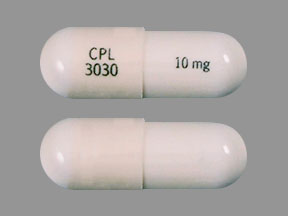Gleostine Dosage
Generic name: LOMUSTINE 40mg
Dosage form: capsule, gelatin coated
Drug class: Alkylating agents
Medically reviewed by Drugs.com. Last updated on Jan 23, 2024.
Important Prescribing and Dispensing Information
PRESCRIBE ONLY ONE DOSE FOR EACH TREATMENT CYCLE. DO NOT DISPENSE ENTIRE CONTAINER.Dispense only a sufficient number of capsules for one dose.
Confirm the total dose prescribed by the physician and the appropriate combination of capsule strengths.
Dispense only the appropriate number of Gleostine capsules required for the administration of a single dose.
The prescribed dose may consist of two or more different strengths and colors of capsules.
Instruct patients that Gleostine is taken as a single oral dose and will not be repeated for at least 6 weeks. Taking more than the recommended dose causes toxicities, including fatal outcomes .
Gleostine is a cytotoxic drug. Follow applicable special handling and disposal procedures. 1
To minimize the risk of dermal exposure, always wear impervious gloves when handling bottles containing Gleostine capsules. Do not break Gleostine capsules; avoid exposure to broken capsules. If dermal contact occurs, wash areas of skin contact immediately and thoroughly.
Recommended Dose
The recommended dose of Gleostine in adult and pediatric patients is 130 mg/m 2taken as a single oral dose every 6 weeks. Round doses to the nearest 10 mg. Give as a single oral dose and do not repeat for at least 6 weeks. Reduce dose to 100 mg/m 2every 6 weeks in patients with compromised bone marrow function. Also reduce dose accordingly when using with other myelosuppressive drugs.
Dose Modifications
Perform weekly complete blood counts and withhold each subsequent dose for more than 6 weeks if needed until platelet counts recover to 100,000/mm 3or greater and leukocytes recover to 4000/mm 3or greater .
Modify each dose of Gleostine according to the hematologic response of the preceding dose as described in Table 1:
|
Nadir After Prior Dose |
Dose Adjustment |
|
|
Leukocytes (/mm 3) |
Platelets (/mm 3) |
|
|
≥ 4000 |
≥ 100,000 |
None |
|
3000 – 3999 |
75,000 – 99,999 |
None |
|
2000 – 2999 |
25,000 – 74,999 |
Reduce dose by 30% |
|
< 2000 |
< 25,000 |
Reduce dose by 50% |
More about Gleostine (lomustine)
- Check interactions
- Compare alternatives
- Pricing & coupons
- Drug images
- Side effects
- During pregnancy
- Drug class: alkylating agents
- En español
Patient resources
Other brands
Professional resources
Related treatment guides
See also:
Further information
Always consult your healthcare provider to ensure the information displayed on this page applies to your personal circumstances.


